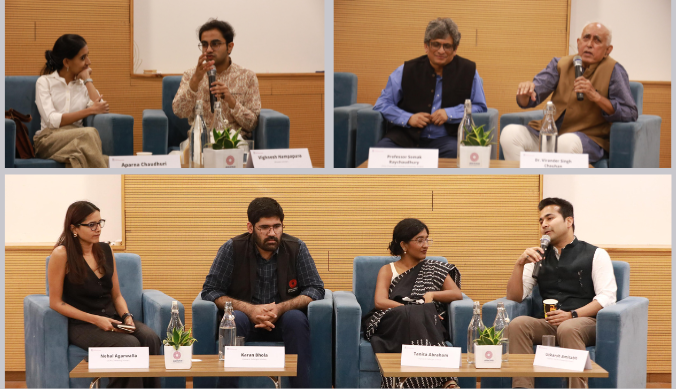Applying Evolutionary Game Theory to Understand Institutional Effectiveness
Dr. Ratul Lahkar, Professor of Economics, Ashoka University, explores how societies navigate the conflict between individual incentives and social welfare. His recent study examines how partially effective institutions impact economic efficiency and why inclusive governance fosters better outcomes.
Game Theory, an approach to strategic decision making, defines how people make choices which impact other people and vice-versa. The ‘game’ in this theory indicates a situation where decision makers (players of the game) make certain choices that can impact the society at large. Dr. Ratul Lahkar, Professor of Economics, Ashoka University, elaborates on this concept by applying ‘Evolutionary Game Theory’, which is an extension of Classical Game Theory. Evolutionary Game Theory focuses on how these strategic decisions of the players evolve over time based on experience.
Two key concepts of Game Theory are Nash equilibrium and Pareto efficiency. Nash equilibrium can be explained as a competitive decision-making strategy where the people involved are not benefiting from changing their current strategy, hence are choosing to continue with their usual way of doing things. On the contrary, ‘Pareto efficiency’ explains the best possible allocation of resources where no one individual is better off without making someone else worse off.
Dr. Lahkar studies how institutions, which refer to laws and norms within which societies or economies operate, can resolve the contradiction between Nash equilibrium and Pareto efficiency. Classical Game Theory suggests that Nash equilibrium, resulting from the selfish behaviour of individuals, often differs from the socially best outcome (the Pareto efficient outcome) because individuals may not consider the effect of their actions on others.
Good institutions help resolve the conflict between private interests and the common good by enforcing appropriate laws, norms, and rules that people must follow. For instance, people may be required to contribute to projects that serve the public interest. Social efficiency demands coordination on a Pareto optimal outcome, one in which everyone makes positive contributions that benefit all. However, when individuals act selfishly at the Nash equilibrium, they may not make any contribution, which results in inefficiency. Good institutions address this contradiction by rewarding socially beneficial behavior and discouraging selfishness.
However, institutions may be only partially effective. For example, the government may reward individuals with incentives for only a part of the positive outcome they generate. In that case, these incentives will not be strong enough to push society to the socially best outcome (Pareto efficient outcome). Nevertheless, even such partially effective institutions can incentivize an outcome that is still better than the Nash equilibrium.
To understand how effective institutions are, we also need to understand what determines the effectiveness of these institutions. The main determinant is whether the fundamental institutional structure of the society is inclusive or exclusive. An inclusive institutional structure is characterised by equitable distribution of socio-economic power, rule of law and broadly democratic decision-making. On the other hand, an exclusive institutional structure is one where power is monopolized by elites. Historical examples of exclusive institutions include feudalism, slavery and dictatorships.
The current study analyzes the emergence and stability of these institutional structures using a game-theoretic model called Tullock contests. Tullock contests describe competitive situations where individuals or groups expend resources to gain control over other valuable resources, such as political power or economic advantages.
Such an exclusive institutional structure generates high levels of social conflict in society with excessive rent-seeking, as individuals compete to acquire power, instead of engaging in productive and beneficial activities. The government, designing institutions (rules) for society, is compelled to divert a part of its effectiveness towards managing social conflict. This compromises its ability to design these institutions effectively. In contrast, with an inclusive institutional structure, social conflict is low as everyone has a fair share of power. The government can focus on creating appropriate incentives for social benefits more effectively. Therefore, the more inclusive the fundamental institutional structure, the greater the institutional effectiveness in resolving society’s coordination problems.
This is the first paper to present a theoretical model of the link between institutional origins and institutional effectiveness. An important implication of the paper is that societies and organizations must prevent elite capture for their institutions to be effective in reconciling private incentives and the social good.
Edited by Kangna Verma, Academic Communications, Research and Development Office, Ashoka University
Reference Article:
Evolutionary implementation with partially effective institutions
Author: Dr. Ratul Lahkar (Professor of Economics, Ashoka University)
Study at Ashoka















